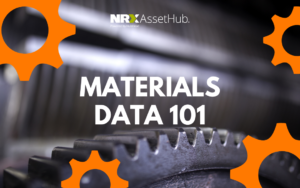An asset-intensive business usually decides to carry out a materials data cleanse because something about their existing data is hindering their work. Though poor legacy materials data may be the whole reason for undertaking a cleansing project, dealing directly with improving this legacy data is overwhelming. For this reason, taking the time to sort through usable and unusable legacy data may be a lower priority throughout the project. Though some materials data may be inaccurate or incomplete, taking the time to review and categorize this kind of legacy data can be a chance to discover hidden gems amongst the coal. How you go about the rest of your cleanse could be influenced by any high-quality spare parts data you find.
The good and the bad
In general, legacy data gets a bit of a bad reputation as being unwieldy or inaccurate. This is not necessarily true! Legacy materials data can tell us something about how workers understand their EAM system’s spare parts information. They may have adapted their own colloquial names and descriptions of spare parts that they find more useful than what the standard names and descriptions would be. While it may be tempting to keep this kind of legacy materials data as it is, unfortunately informal spare parts information like this can be less easy to find and manage in an EAM system. However, a cleanse can seem intimidating to workers or asset managers because it may lead to a loss of this useful data in the pursuit of standardization or improved classification.
This is why it’s important to find a cleansing solution that can help you classify and standardize your spare parts data in a new and improved way while retaining the useful informal names and casual parts descriptions of the past. Bonus if the workers are still able to create similar colloquial names and descriptions in the future for their own benefit.
Not all legacy materials data is useful, and not all of it needs to be retained. Duplicate and obsolete parts can be some of the most cumbersome and costly components of an EAM system. Eliminating this unwieldy or unusable information can help reduce the time it takes for workers to find the spare parts data they need. It can also make all the difference for asset managers who struggle to create reports or analyze their asset and maintenance data because their legacy materials data is unreliable.
The balance
Striking a balance between what materials data to keep and what materials data to discard can be tricky. A cleansing solution can be a great step towards making your legacy materials data more manageable without the struggle of cramming all your old information into or throwing it all out of your newly cleansed system. Fixing all your data at once may be unrealistic and overwhelming, but learning to love your legacy materials data again could be a great start to establish a good foundation for future corrective and preventive EAM system maintenance. To learn more, take a look at one of our resources below, or book a demo with us to see how we can help!
Materials Data 101

Knowing your Spare Parts Dictionary from A to Z

Strategically Source Spare Parts and Spend Less with Materials Cleansing

Share this article

